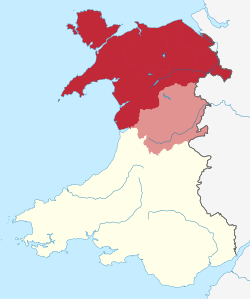Wales has traditionally been divided into a number of ambiguous and ill-defined areas described as regions , reflecting historical, geographical, administrative, cultural and electoral boundaries within the country. Presently, the most common form of division of Wales into "regions" has been using cardinal and intercardinal references: north or south-west for example. [1] None of the variously described "regions" have official status or defined boundaries; neither is there a fixed number of regions. Various organisations use different regions and combinations of regions for their individual purposes. This includes devolved institutions, such as Visit Wales, [2] Natural Resources Wales, [3] and the Welsh Government itself, [4] [5] [6] using different sets of Wales' regions. Wales is most commonly sub-divided into between two and four regions, with a North–South divide, and North, Mid, South East and South West division being common. This article lists the various terms applied to be the "regions of Wales" and the regions used by various organisations.
Contents
- Status
- Historical usage
- Capitalisation
- List of regions
- Geographical regions and sub-regions
- By organisation
- Statistical regions
- Cultural regions
- Linguistic regions
- City regions
- Regional Tourism Partnerships
- Regional Corporate Joint Committees
- Regional Skills Partnerships
- Transport-related
- Cross-border regions
- Electoral regions
- Historic regions
- Natural regions
- Fire and Rescue
- Rugby league
- Rugby union
- Others
- See also
- References










